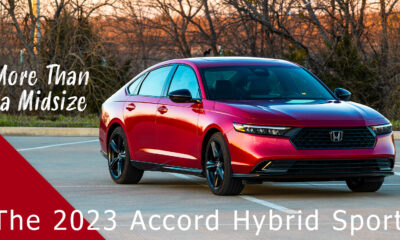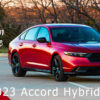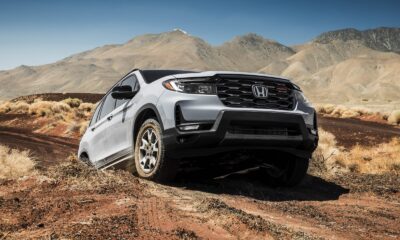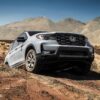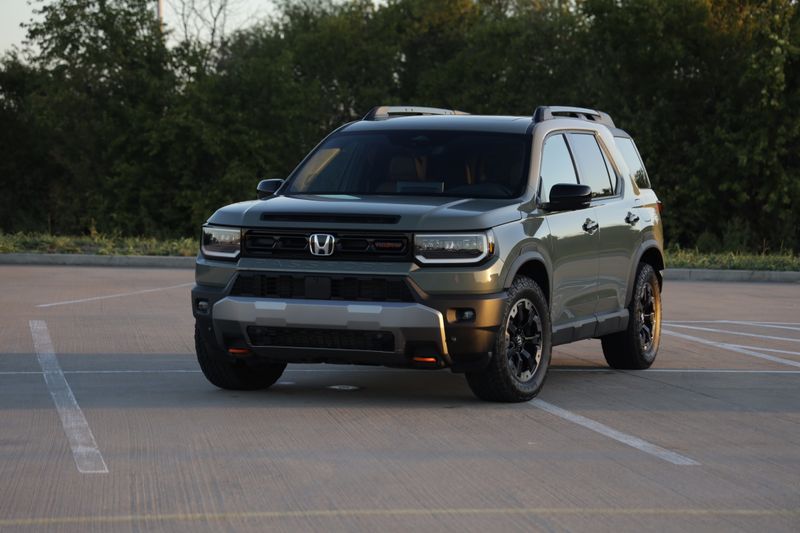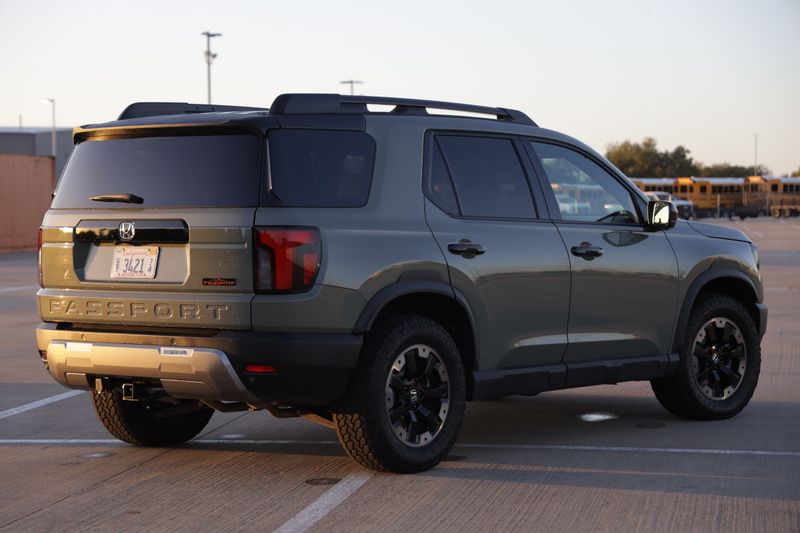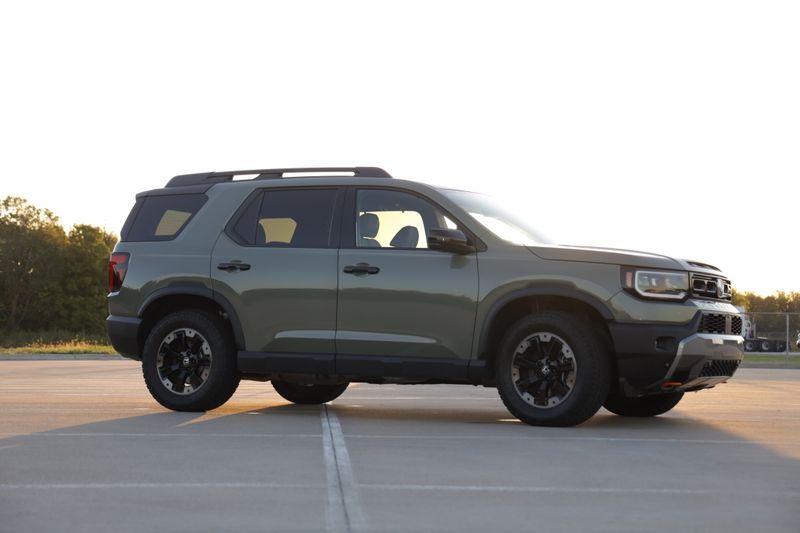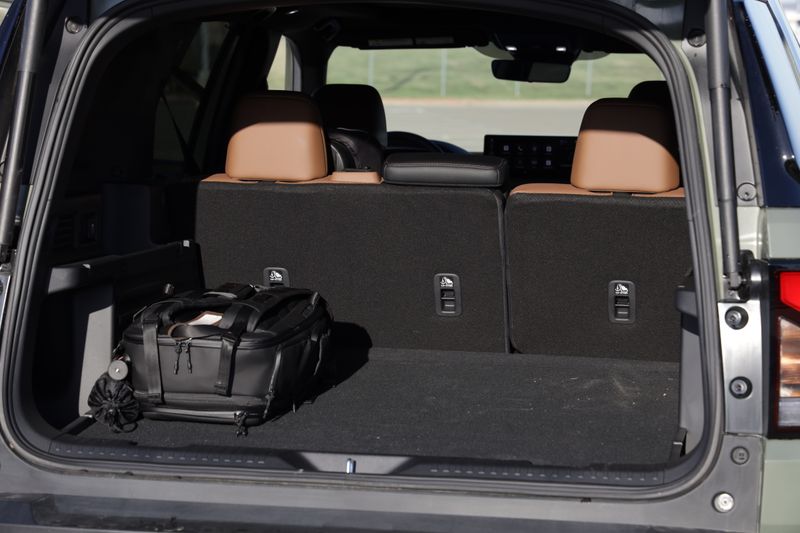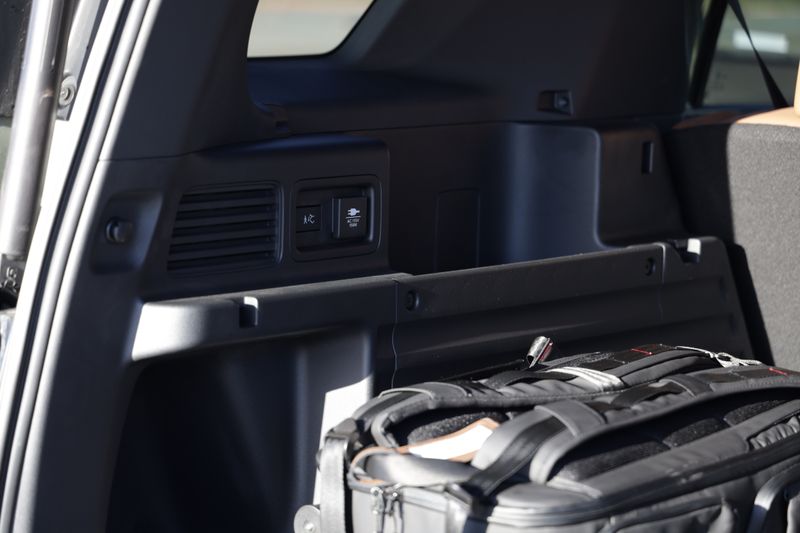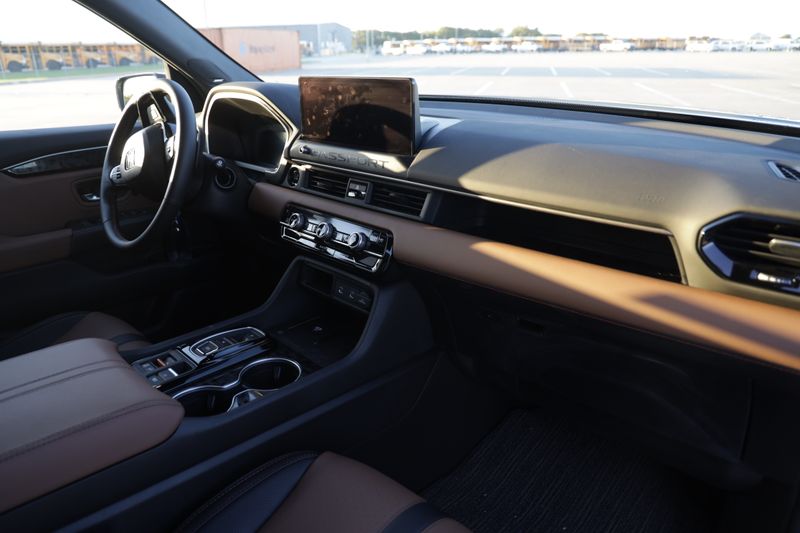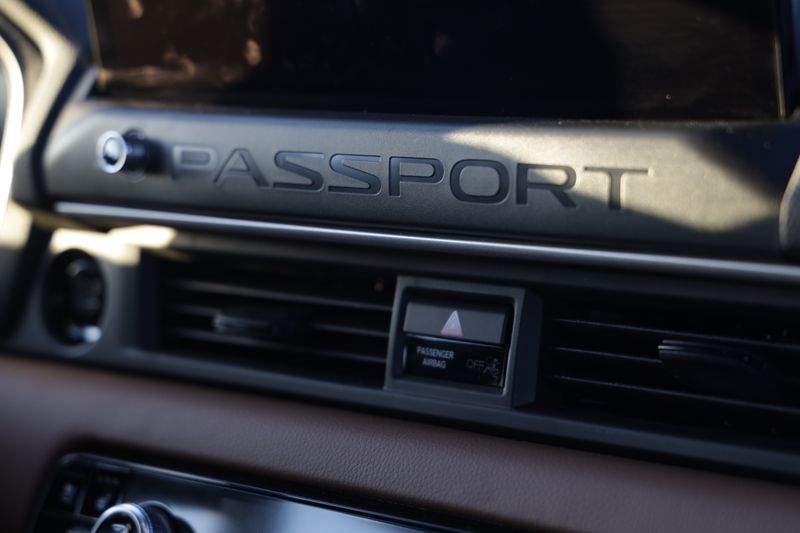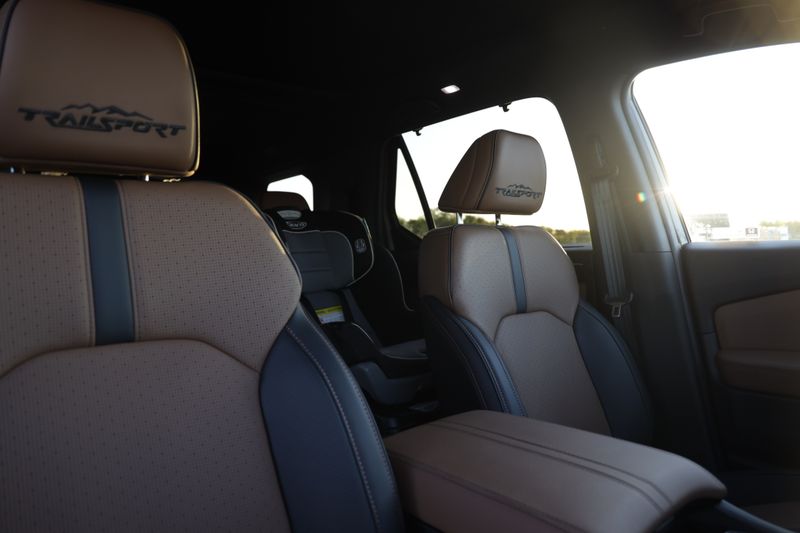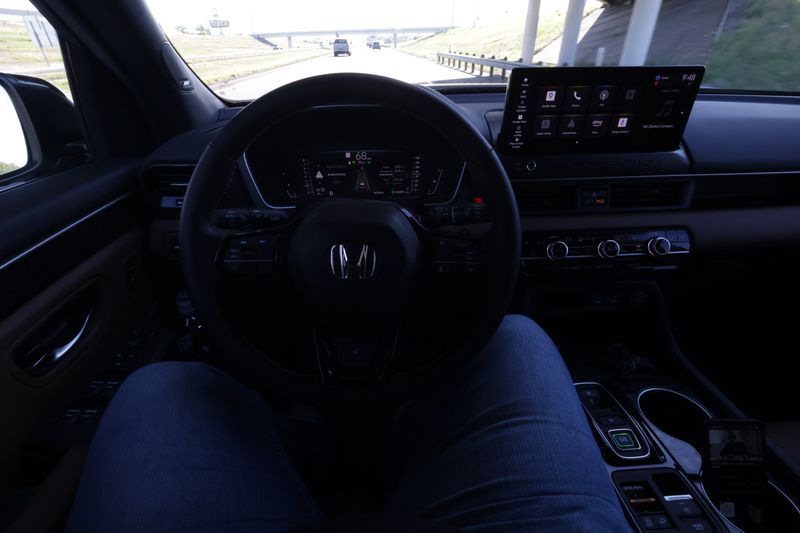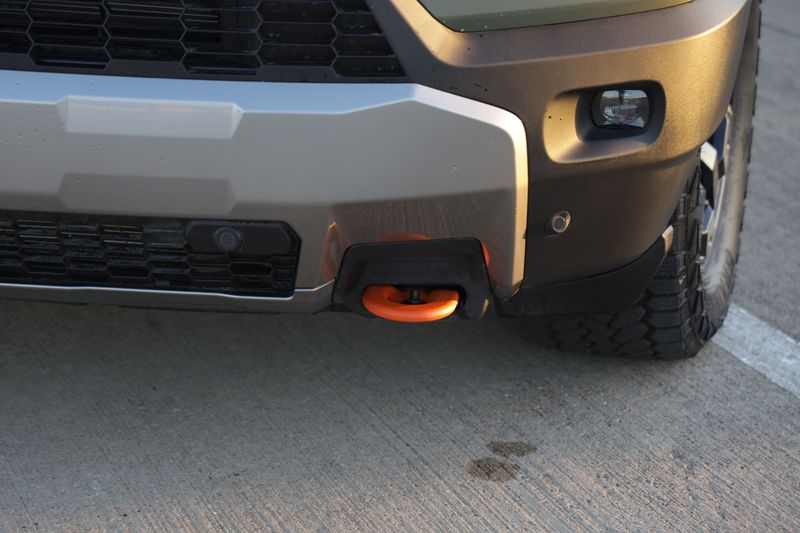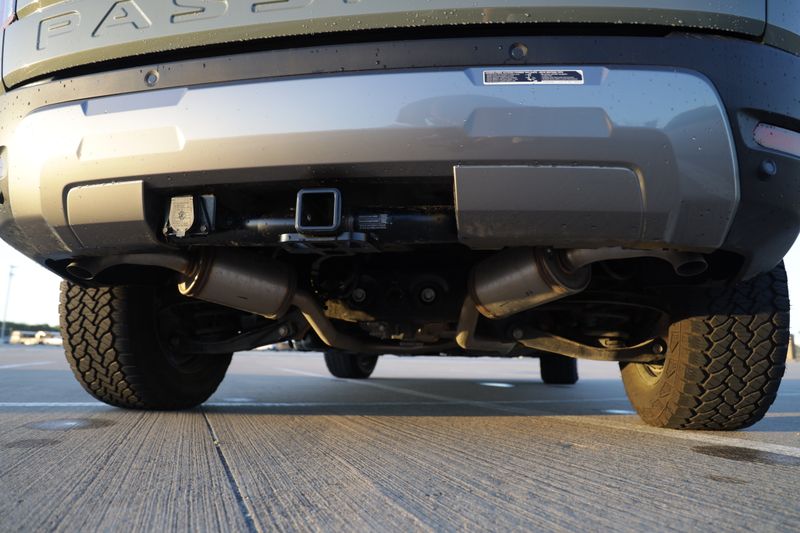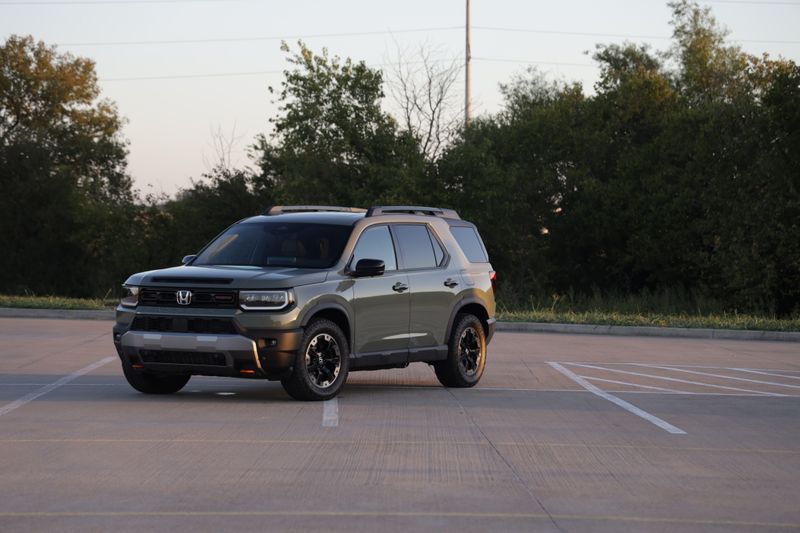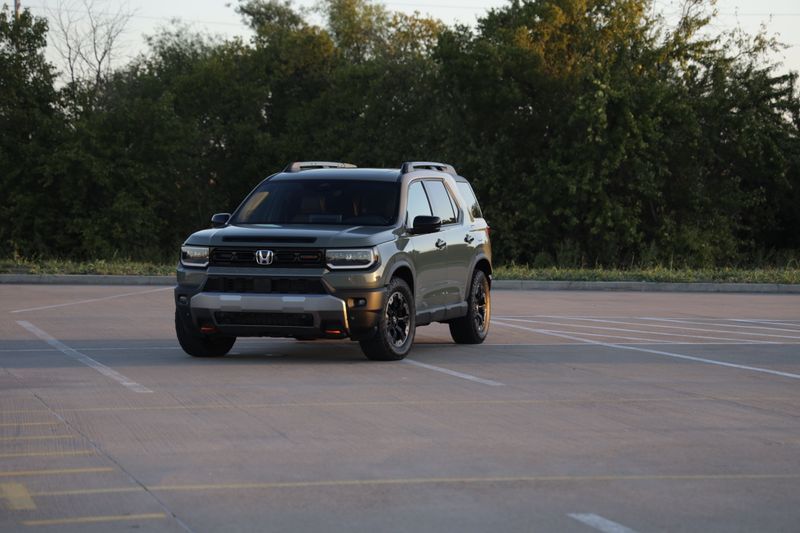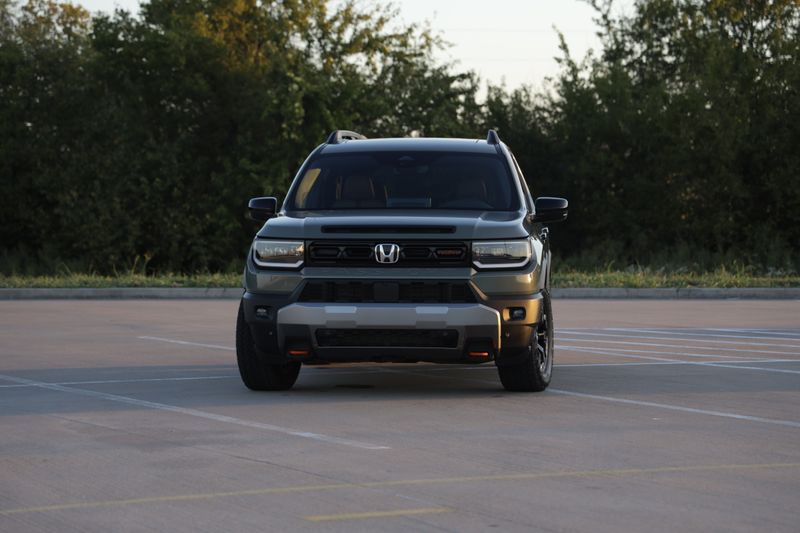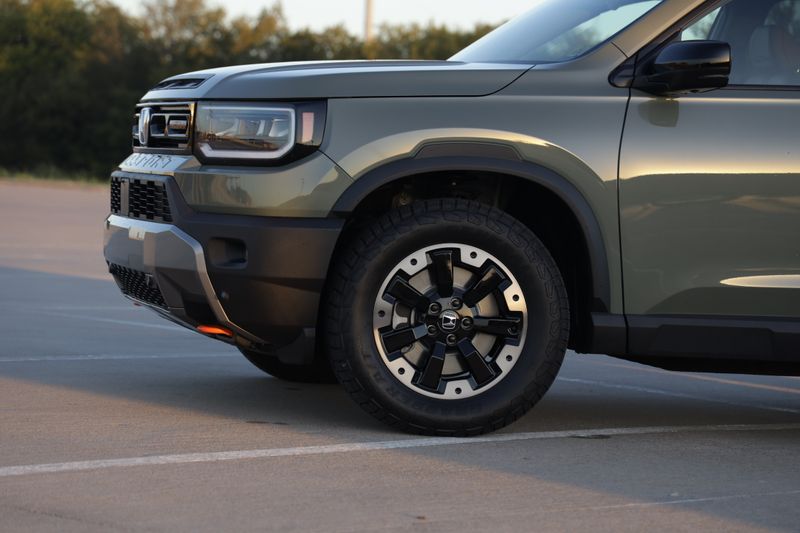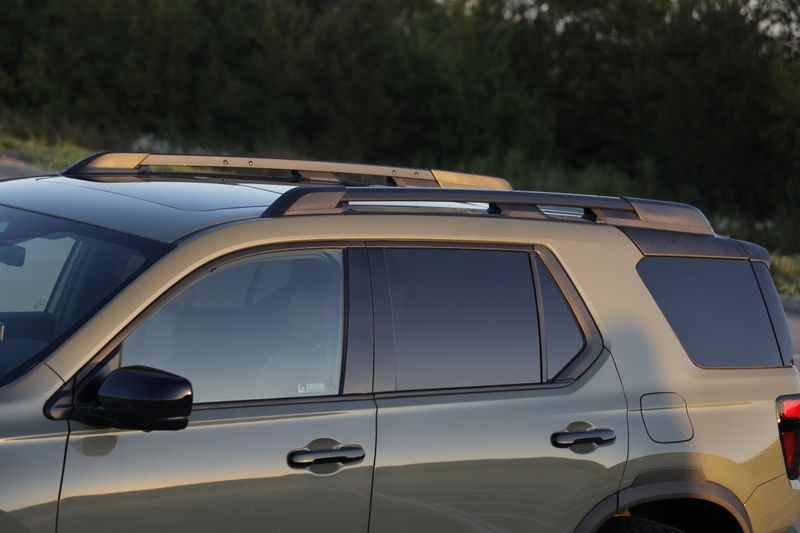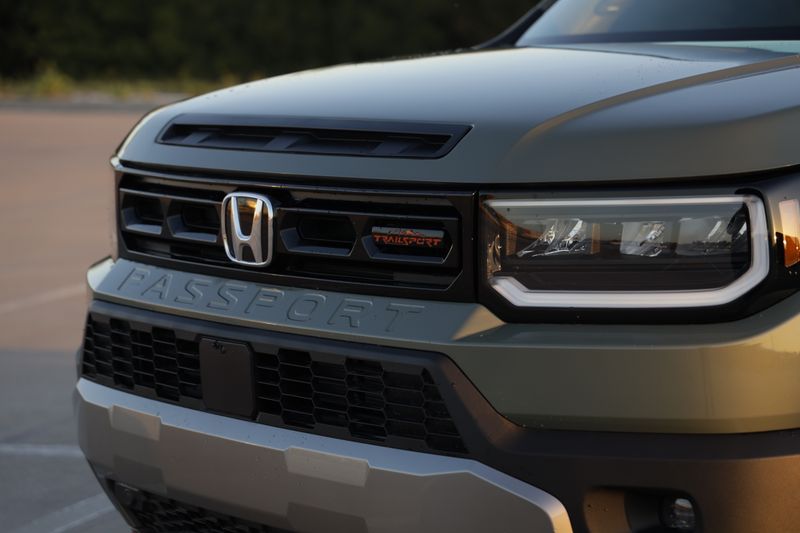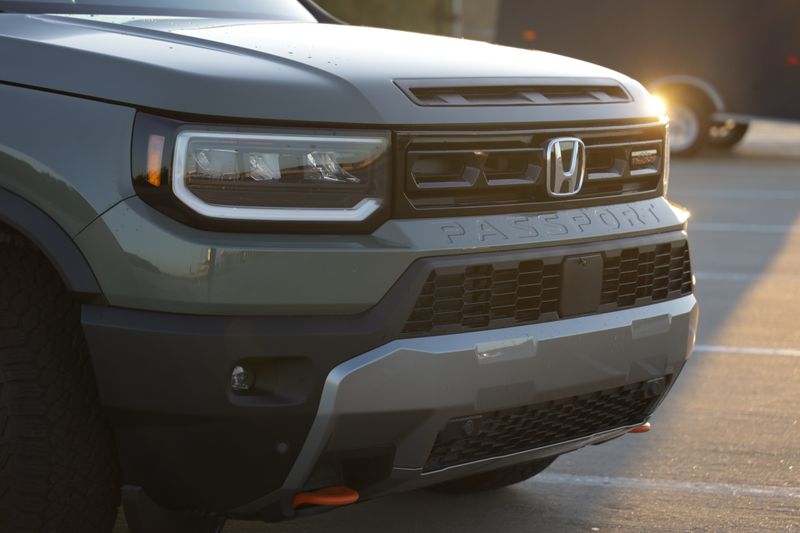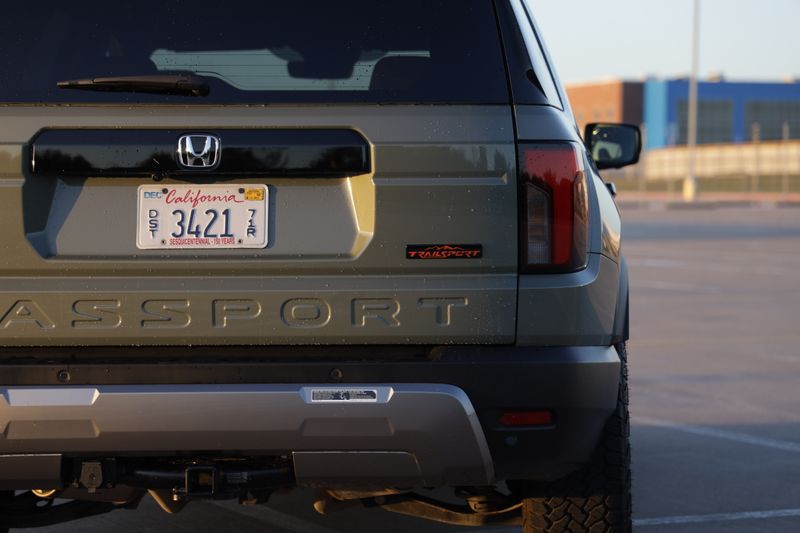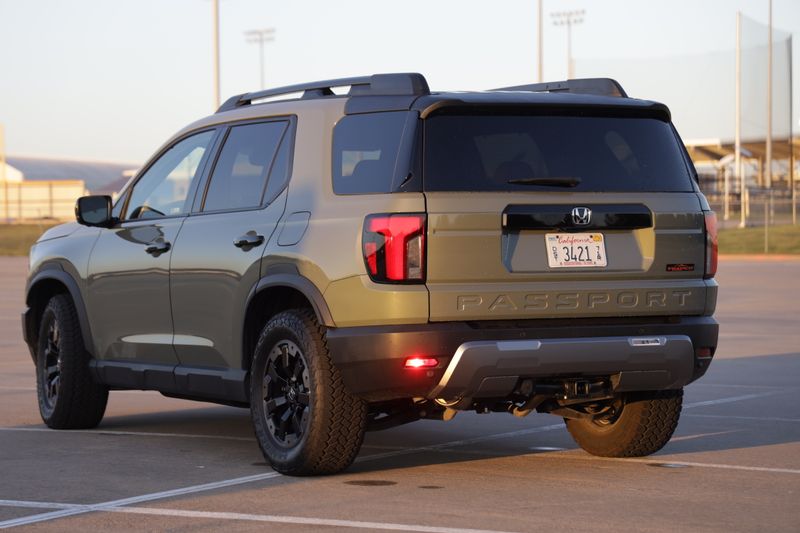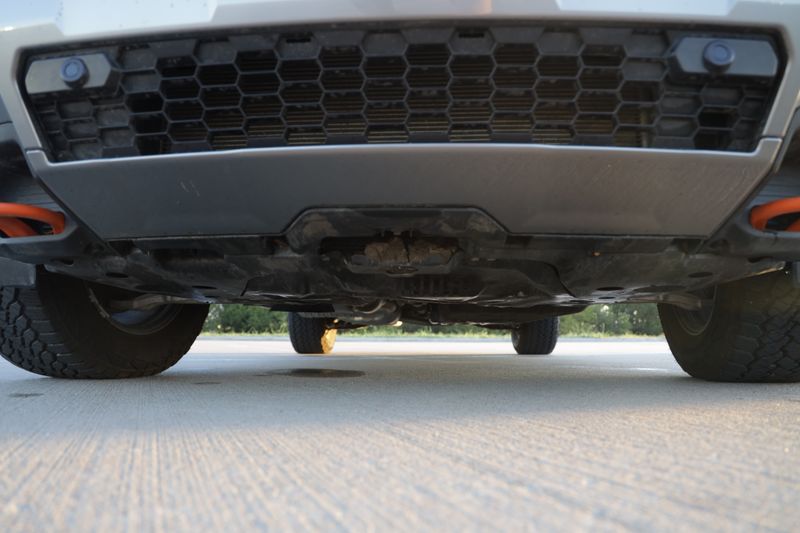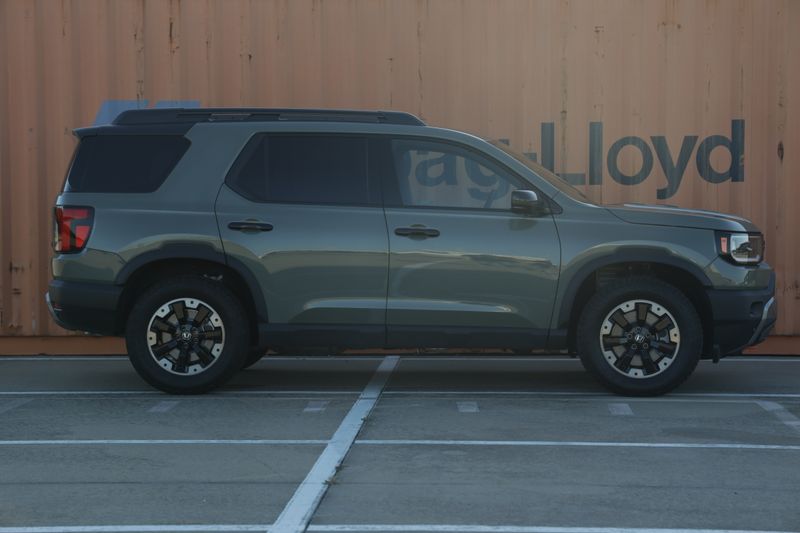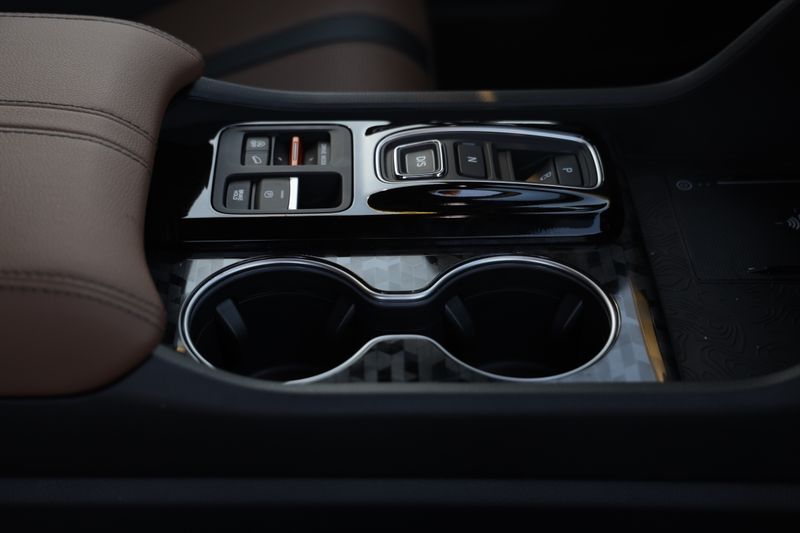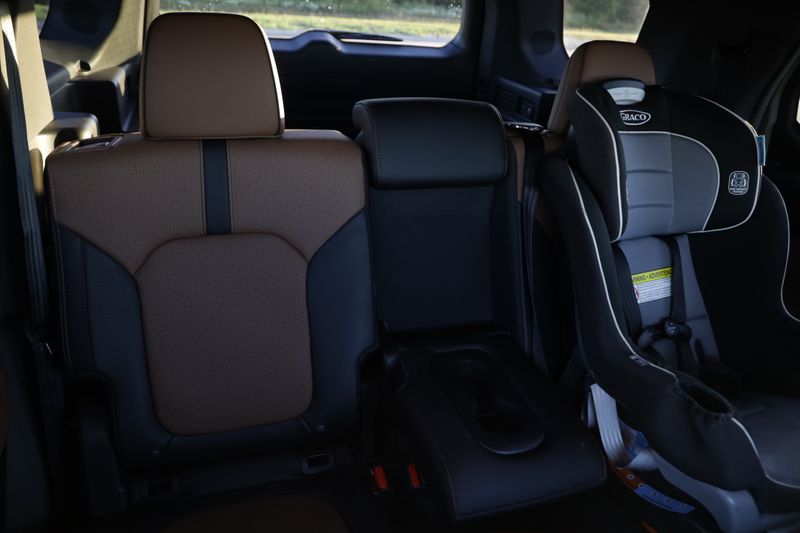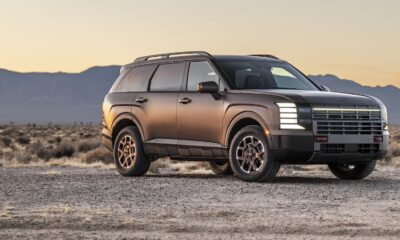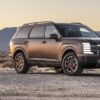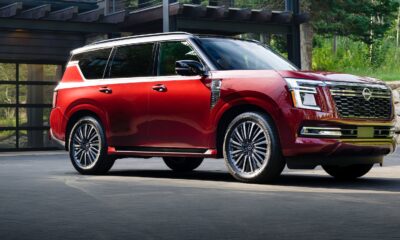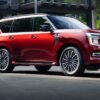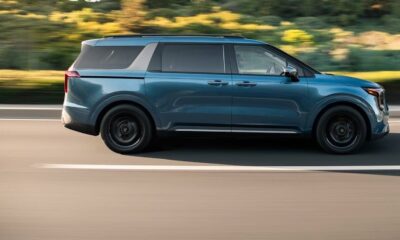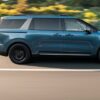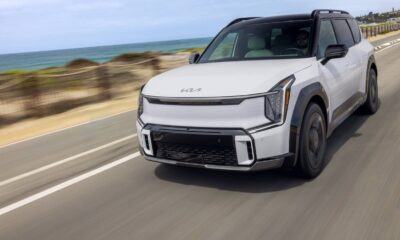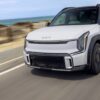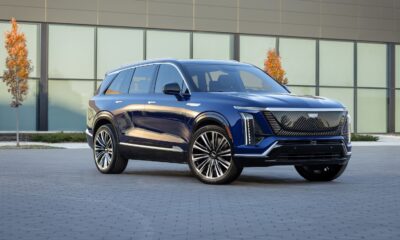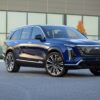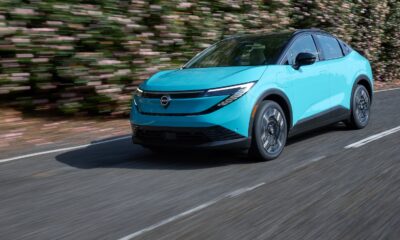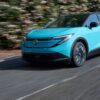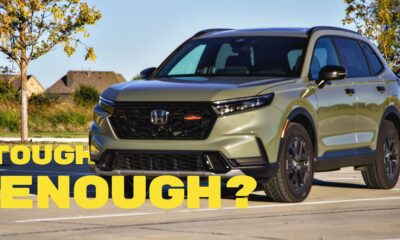Car Reviews
2026 Honda Passport TrailSport Elite – All-New, All-Terrain, All Honda
Honda didn’t just refresh the Passport; they reimagined it as the weekend-ready SUV it always wanted to be. The 2026 Passport arrives with a tougher stance, real off-road hardware, and a cabin that’s clean, modern, and genuinely easy to live with. I first drove this exact TrailSport Elite at the Texas Truck Rodeo, then spent a week using it as a family hauler and light-trail explorer. It handles itself well, the tech “just works,” and the space is—technical term—insanely big. Fuel economy isn’t the headline, but given what this SUV is built to do, it’s good enough. If your life looks like highway miles to a trailhead, a night under the stars, and a smooth ride home, this Passport fits the picture.
For walk-arounds, camera demos, and off-pavement clips, watch the companion video.
The Lineup, Simplified
Passport comes in three well-equipped trims, all with standard i-VTM4 torque-vectoring all-wheel drive and the new 3.5-liter DOHC V6 with a 10-speed automatic. The RTL sets the baseline with leather, heated fronts, big screens, and the full Honda Sensing suite. TrailSport layers in the hardware that matters off road: off-road-tuned suspension, thick steel skid plates, heavy-duty front and rear recovery points, the hitch with a 7-pin connector, and all-terrain tires sized 275/60R18—Honda’s largest SUV tire to date (co-developed with General). TrailSport Elite, tested here, adds the comfort and tech: perforated leather with orange piping, ventilated fronts and heated rears, a heated wheel, tri-zone climate, rear-door smart entry, expanded ambient lighting, a custom-tuned 12-speaker Bose system, and Honda’s TrailWatch 360º camera with tire-path graphics.
Style That Means Something
This design isn’t cosplay. The new Passport wears a bold grille, a longer hood with a functional scoop, flared fenders, and amber DRLs on TrailSport models. The broader shoulders and wider tracks aren’t just for looks; they help stability. Out back, the “backpack” theme blackens the cargo-bay roof section so you can lean skis or fishing rods against it without scuffing paint—a small touch that shows someone was thinking about actual use. Wheels are 18s with sunken valve stems to protect them on the trail. And for the first time on a Honda light truck, TrailSport models get orange, cast-iron front recovery points engineered to support twice the vehicle’s weight and break away in a frontal crash—clever engineering in service of both safety and utility. Our tester wears Ash Green Metallic—a TrailSport-exclusive color—and machine-finished alloys; the optional white wheels look fantastic, though this unit isn’t running them.
Open the Hatch, Pack Your Weekend
With the third row gone, the Passport’s cargo area turns into your gear room. Mountain bikes (front wheels off) lay flat. Coolers, tents, and totes disappear behind the second row. Side cubbies swallow gallon water jugs; an under-floor bin hides smaller stuff. Honda lists up to 83.8 cu-ft behind the first row in the press kit, while the on-sale release cites up to 104.6 cu-ft measured by SAE J1100 including floor space and under-floor storage. Translation: however you count it, this is a massive, flat, genuinely useful space. If you’re the overlanding type, Honda’s accessory catalog adds MOLLE panels, a cargo shelf that becomes a picnic table, rock sliders, and a full-size spare kit to secure a matching wheel and A/T tire upright where you can actually reach it.
Heart And Gears
Under the hood is Honda’s most powerful U.S.-market V6 yet: a 24-valve DOHC 3.5-liter with 285 hp at 6,100 rpm and 262 lb-ft at 5,000, paired with a new 10-speed automatic. The transmission is tuned specifically for Passport and it shows—clean launches, quick multi-gear downshifts, and smooth behavior when you’re just cruising. The second-gen i-VTM4 system is standard and substantially more capable: a stronger rear drive unit, 40% more torque capacity, and 30% faster response. It can send up to 70% of torque rearward, and 100% of that to either rear wheel. On paper that reads advanced; on road (and dirt) it feels natural, helping the Passport rotate cleanly and maintain traction where lesser systems would scramble.
Tech That Just Works
Honda’s tech story is refreshingly simple. Every Passport gets a 10.2-inch digital instrument display and a 12.3-inch center touchscreen—the largest Honda has fitted—with a physical volume knob. Wireless Apple CarPlay and Android Auto are standard, but the Google built-in experience is the star, bundling Assistant, Maps, and Play with a complimentary three-year data plan. As a recent Android convert, this feels natural: “Hey Google, lower the temperature” actually lowers the temperature; mapping shows in the cluster; and the system is quick enough not to make you think about it. Qi wireless charging up front is 15W, and there are 60W USB-C ports front and rear for real device charging; TrailSport models add 115V power in the console and cargo area. TrailWatch on Elite is the cherry: four cameras with front, rear, side, and overhead views, plus tire-path graphics that make threading ruts and rocks a lot less guessy.
Space, Seats, And The Stuff That Matters
The new Passport cabin is modern and uncluttered, with high-quality switchgear and a smart shelf on the passenger side for everyday carry. Honda’s Body-Stabilizing front seats deserve credit—they keep posture steady over long days so you arrive less beat up. Rear-seat legroom is best in class; adults fit behind adults without the knees-in-dash compromise. Storage is everywhere: a giant center bin (tablet-sized), big door pockets, 10 big-volume cupholders (yes, Nalgene-sized), and room left over. TrailSport interiors get the orange stitching and easy-clean synthetic upholstery; Elite swaps in perforated leather with piping, ventilated fronts, heated rears, the heated steering wheel, rear-door sunshades, expanded ambient lighting, and that Bose system that fills the cabin without drone or boom.
On-Road Manners
Honda stiffened the structure dramatically—72% more lateral rigidity up front and 50% more torsional rigidity in the rear—and revised both ends of the suspension. The result is a midsize SUV that feels planted and predictable, not ponderous. Steering is variable-ratio and quick on-center, which makes lane changes and two-lane work easy. On the highway, it tracks straight, the cabin is calm, and the Bose system takes over. Around town, Normal mode keeps throttle mapping relaxed and the 10-speed almost disappears. Click Sport and it wakes up without turning coarse. It isn’t trying to be a performance SUV; it’s trying to be the one you don’t think about until you hit the fun part of the drive.
Off-Road Cred You Can Feel
TrailSport is more than badges. You get off-road-tuned springs and dampers, softer stabilizer bars for articulation, those co-developed General Grabber A/Ts, thick high-strength steel skid plates, and real recovery points. Approach angle improves with a shorter front overhang; ground clearance on TrailSport is 8.3 inches, with approach at 23.0 degrees and departure at 23.1 degrees measured to the protective hitch. Hill Descent Control is standard across the board. Trail mode activates Trail Torque Logic, which can feed more torque rearward and keep some torque at a slipping wheel so, when it regains contact, forward progress is smooth rather than lurchy. In the dirt at the Truck Rodeo and on our local ruts, the Passport felt composed, predictable, and—importantly—unflustered. As always, hardcore crawling and heavy towing are tough to fully replicate during a week-long loan, but the hardware here feels honest and the calibration is spot on.
Safety And Assistance, Updated
Honda Sensing gets better eyes and faster brains: a camera with a 90-degree field of view and radar with a 120-degree field of view. The suite adds Traffic Jam Assist and Traffic Sign Recognition and updates ACC and LKAS for more natural behavior. Blind-spot detection range stretches to 82 feet. Eight airbags are standard, including the award-winning three-chamber front passenger airbag designed to reduce head rotation in angled impacts, plus new knee airbags for driver and passenger. Targets include top scores from both IIHS and NHTSA.
Towing And MPG
Every Passport now carries a 5,000-pound tow rating without needing a dealer-installed transmission cooler. Fuel economy for TrailSport and TrailSport Elite is EPA-rated at 18 city, 23 highway, 20 combined; RTL is rated 19/25/21. If maximum range is your priority, there are thriftier choices; if your weekend involves a utility trailer, a small boat, or a couple of bikes plus camping gear, the Passport’s balance of power and capability makes sense.
What It Costs
MSRP starts at $44,750 for RTL. TrailSport lands at $48,450, and TrailSport Elite at $52,450, each plus a $1,450 destination charge. Factory “Blackout” variants on the TrailSport and Elite add the appearance punch if that’s your taste; if you’re counting value, the regular TrailSport is the sweet spot for hardware-per-dollar, while the Elite earns its keep with Bose, ventilated seats, heated rears, and TrailWatch.
Cross-Shopping Reality Check
Toyota’s new-gen 4Runner remains the body-on-frame champ for slow-speed technical trails; it’s also heavier and rides truckier. Jeep’s Grand Cherokee brings more powertrain variety and luxury options at a higher price, plus potentially higher running costs. Subaru’s Outback Wilderness is lighter duty, great in snow and gravel, and more efficient, but it won’t match the Passport’s V6 smoothness or 5,000-pound tow rating. Ford’s Explorer Timberline and Nissan’s Pathfinder Rock Creek walk a similar “adventure trim” path; I prefer Honda’s steering and the Google integration for daily life. Inside the brand, if you truly need three rows, buy the Pilot TrailSport; if not, this two-row Passport gives you a cleaner package and a bigger, easier cargo bay.
The Texas Take
I really like the new Passport’s design, and I appreciate that Honda leaned into TrailSport with real hardware instead of stickers. It looks rugged without trying too hard, drives with the kind of polish you want Monday through Friday, and feels confident when the pavement ends. The interior tech is cohesive and mature; as a recent Android convert, the Google-centric infotainment felt natural. Seats are comfortable, space is abundant, and the cargo room is exactly what a two-row adventure SUV should offer. Fuel economy isn’t the selling point, but for how most people will use this—road-trip to trailhead to campsite and back—it’s absolutely fine.
If that sounds like your life, the 2026 Honda Passport TrailSport—especially the Elite—should be on your shortlist.







